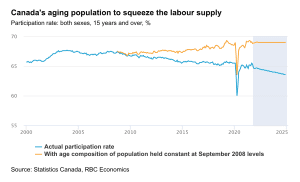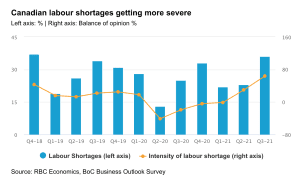COVID-19 has affected the economy in many areas, but none more profoundly than the job market. Pre-pandemic labor and skills gaps have only continued to grow, and new ones have emerged, creating challenges for businesses of all sizes. In 2020, labor shortage was very significant, and it continues to be challenging as the 23% of the aging population enters retirement by 2024.

According to data from Statistics Canada, the number of job vacancies in the third quarter of 2021 reached an all-time high of 912,600. Businesses were already reporting acute labour shortages in many sectors prior to the pandemic. It was noted that the largest increase in job vacancies from 2019 were in Quebec, Ontario and Saskatchewan. Job growth has been very strong in some sectors. For example, job vacancies increased between the third quarter of 2019 and the third quarter of 2021 in 18 of the 20 major industries. “Five sectors accounted for two-thirds (67.6%) of the increase: accommodation and food services (+86,400; +112.8%), health care and social assistance (+52,100; +78.8%), construction (+34,300; +83.7%), retail trade (+32,400; +45.2%), and manufacturing (+31,200; +62.4%).”

A well-known solution is to increase wages, but it will not be enough to fill all the positions. Furthermore, workers expectations have changed a lot! They are increasingly looking for more “suitable hours” and remote work environment for greater autonomy as well as benefit advantages. Thus, labor shortages are expected to become even more extensive in the year ahead.
Employers are now turning to foreign temporary workers to help them fill positions. Foreign workers can be an immediate relief to businesses without the need to compromise on the qualification and credential requirements. Immigration is indeed a solution to meet the growing needs of the labor market.

